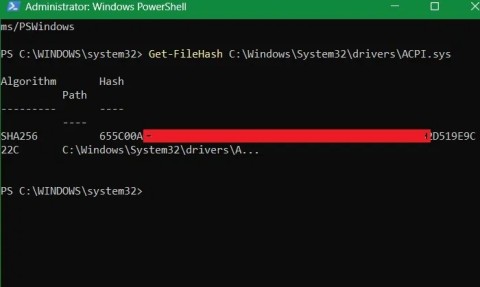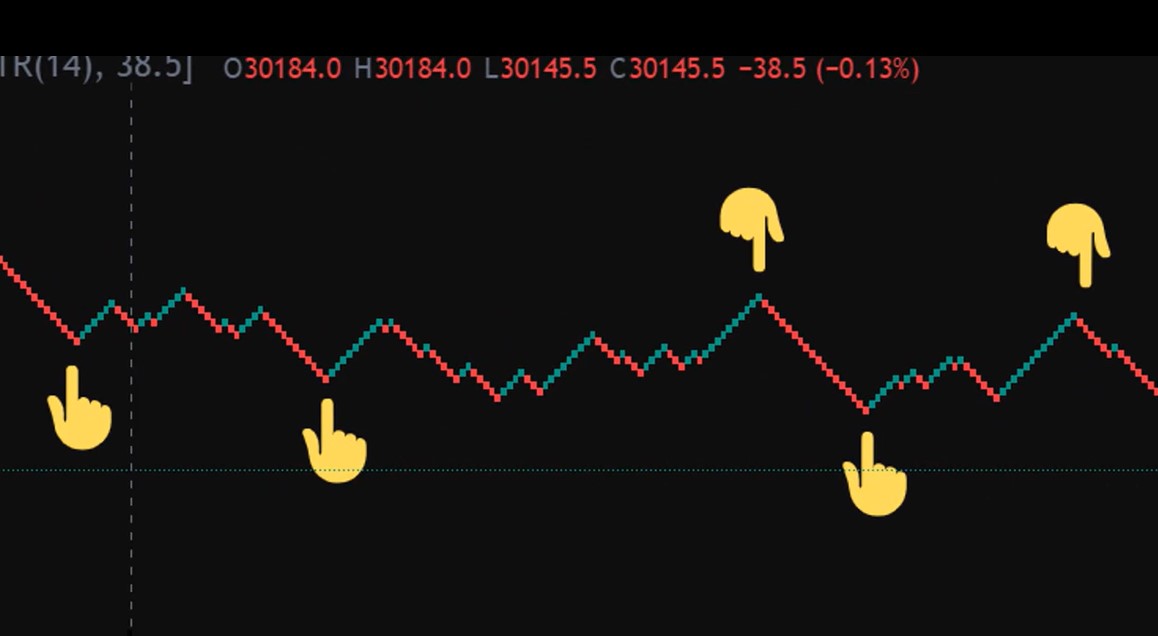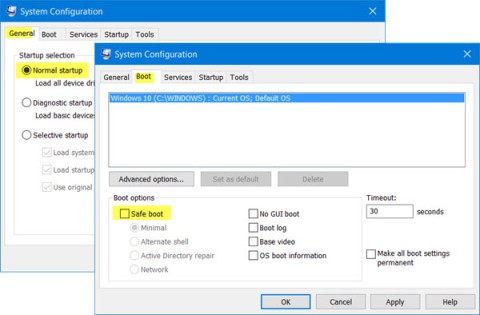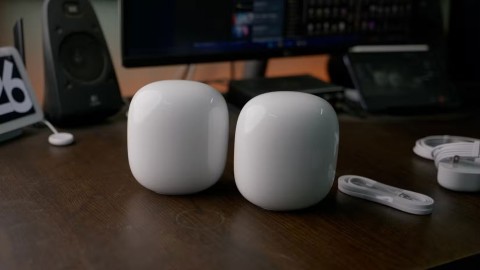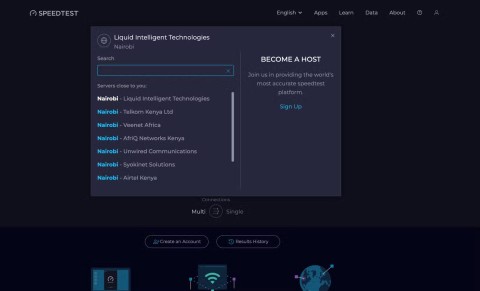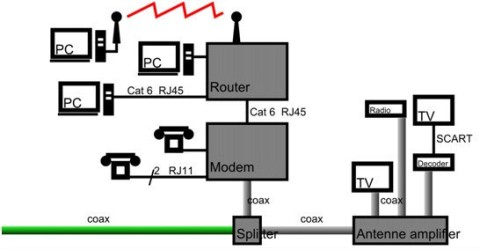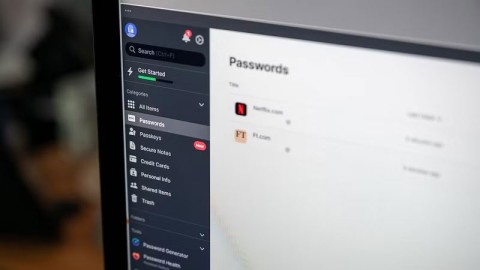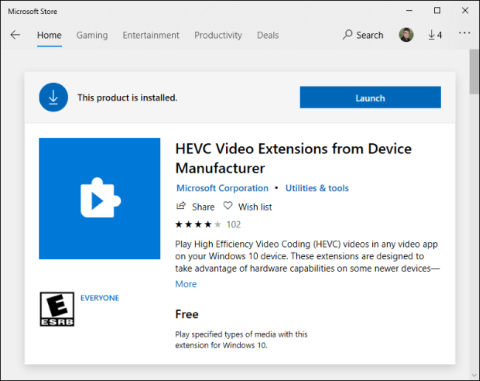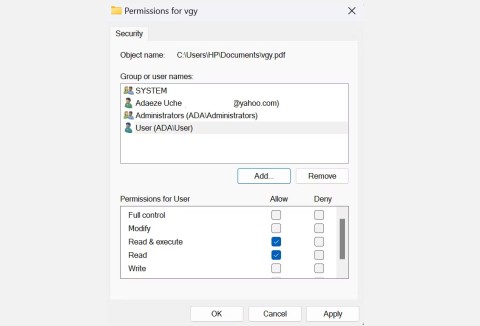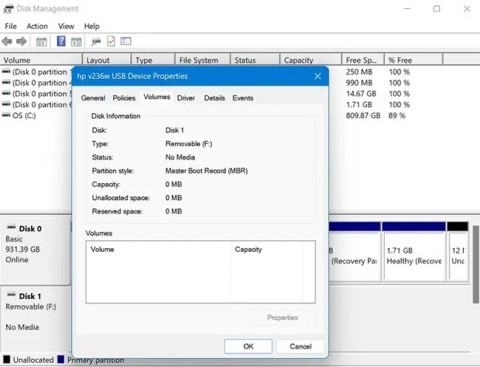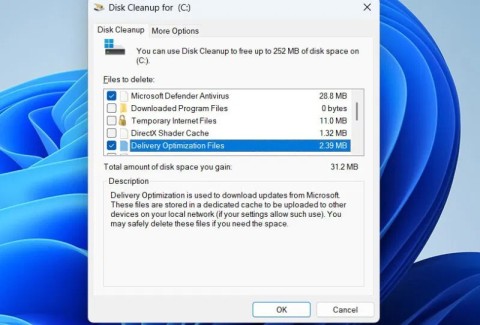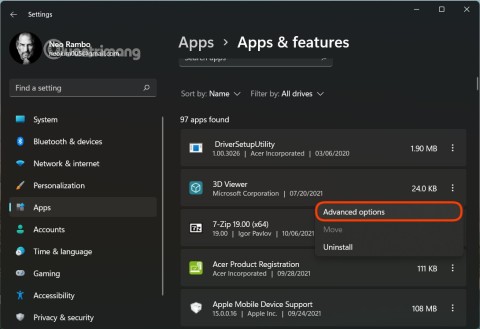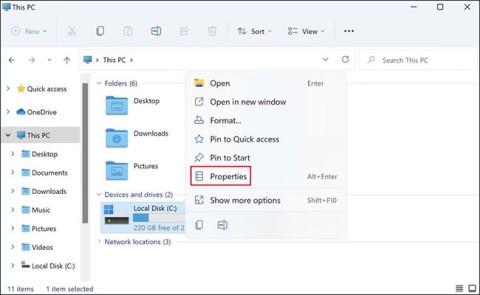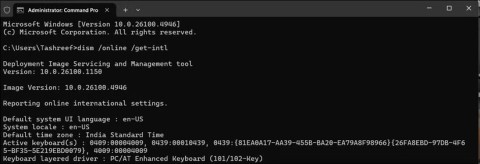When you enable multiple language packs, Windows will display the Language bar on the Taskbar to easily switch keyboards. Some users reported that the language bar disappeared on Windows 10 computers. Therefore, this article will guide you on how to fix the language bar loss error on Windows 10.
Instructions to fix the problem of missing language bar
How to enable Input indicator on Windows 10
Press Win+ Ito open Settings and click Personalization .
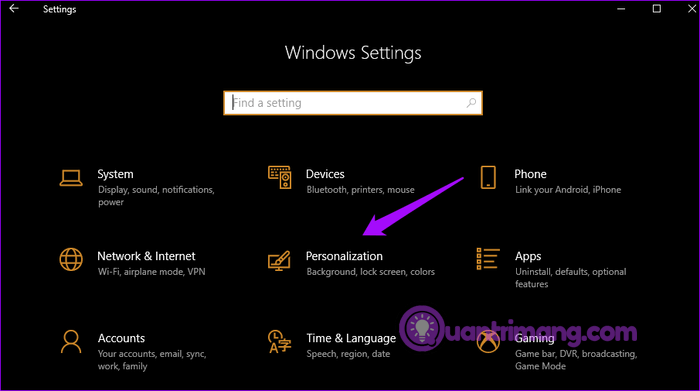
Click on Taskbar in the left pane and select Turn system icons on or off in Notification on the right.
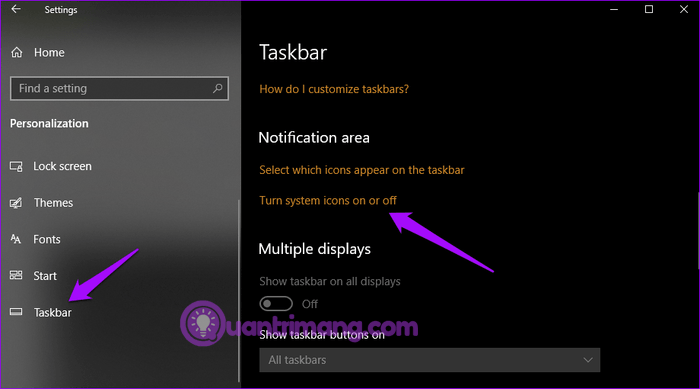
Enable the Input Indicator option .
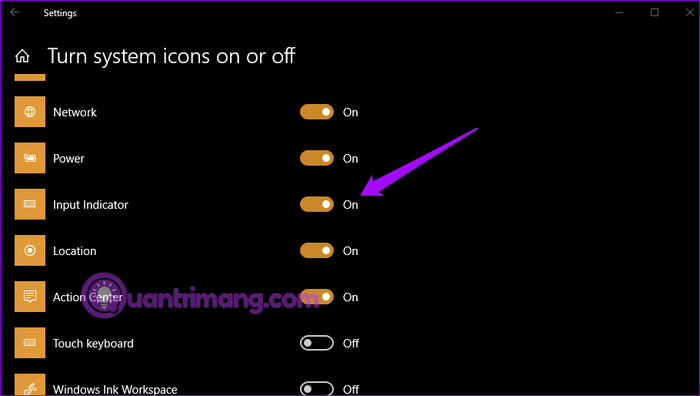
You can now switch languages from the Taskbar.
How to enable language bar on Windows 10
Users love the language bar because it can be moved and placed anywhere on the desktop. To enable the language bar , press Win+ Ito open Settings and click on Devices .

Select Typing in the left pane and scroll down to find Advanced keyboard settings under More keyboard settings on the right.
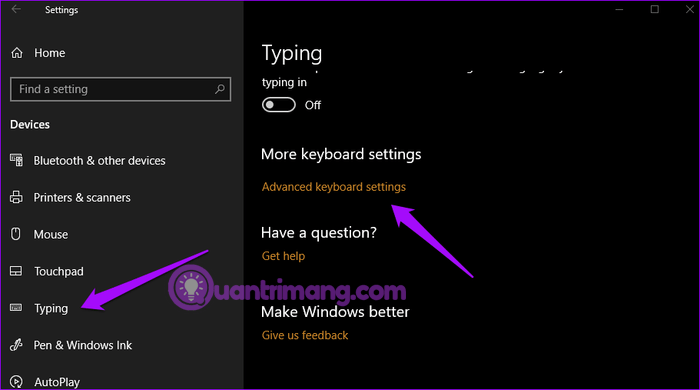
Again, scroll down to select the Use the desktop language bar when it's available option .
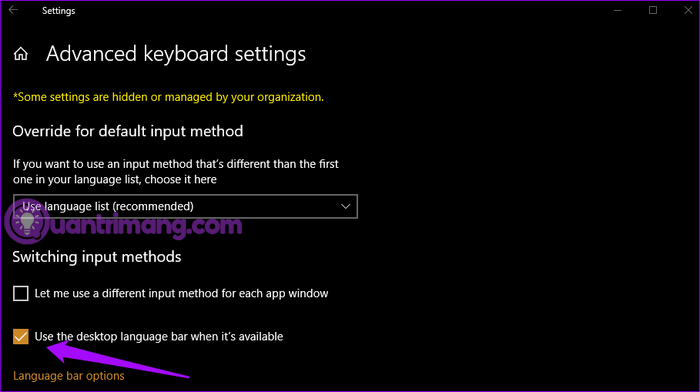
Here you will see the first icon for the language bar and the second icon for the Input indicator on the Taskbar.
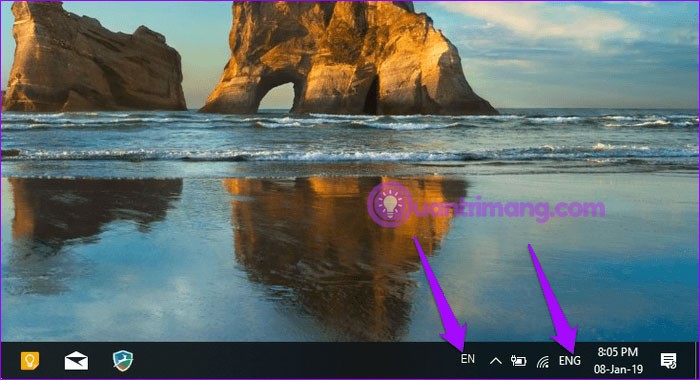
To unpin the Language bar and move it freely on the desktop, click on the Language bar and select Show the language bar .
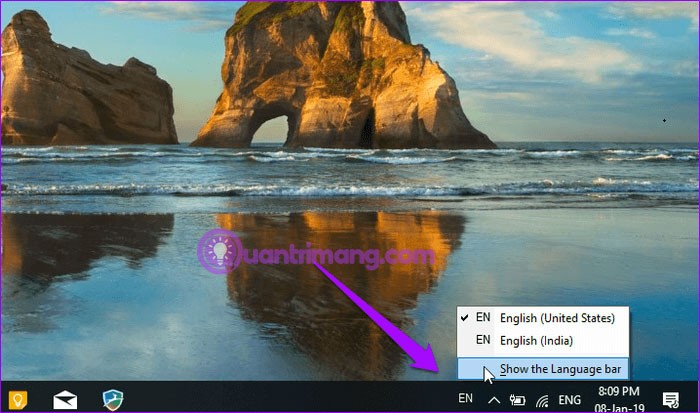
Now you can move and pin it on the window so you can use it whenever.
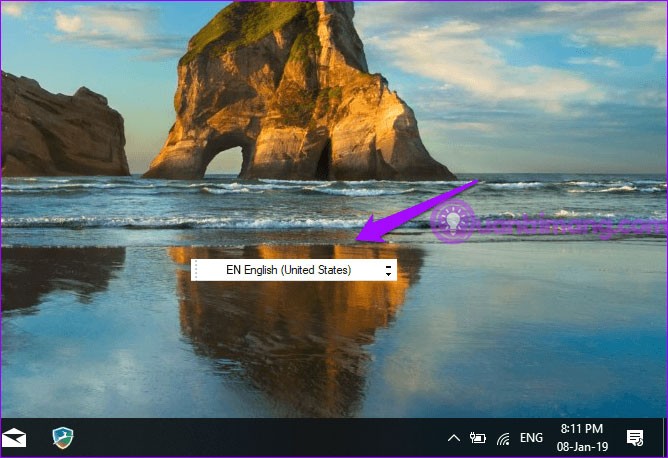
How to fix missing language bar error on Windows 10
If you have done the above correctly and still do not see the language bar on the Taskbar, try one of the fixes below.
1. Unhide the language bar
The missing language bar may be hidden. Press Win+ Ion the keyboard to open Settings and click on Devices . Select Typing on the left pane, scroll down and click on Advanced keyboard settings under More keyboard settings . At the bottom, you will see the Language bar options option , click on it.
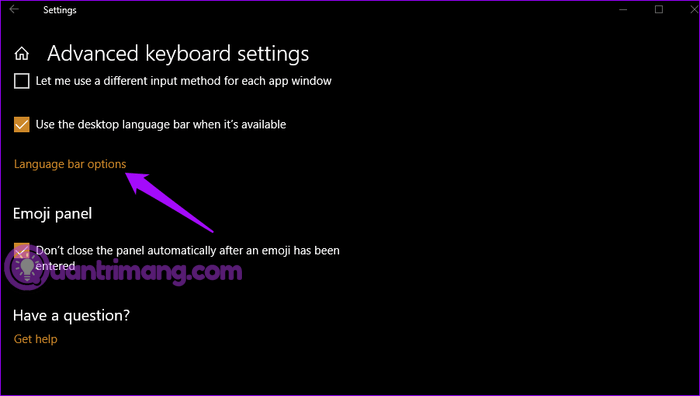
From the pop-up window, select Docked in the taskbar or Floating On Desktop .
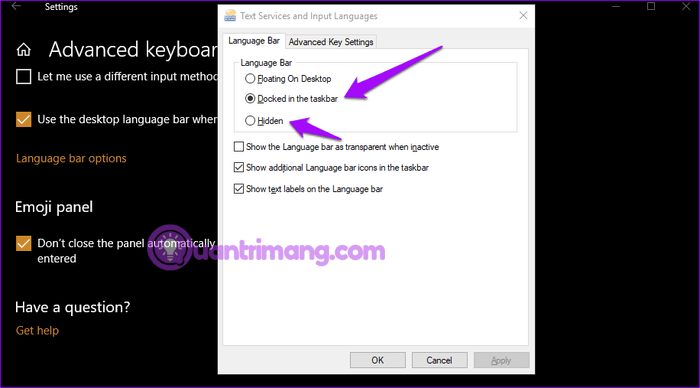
Click the Apply button and the language bar will appear in the Taskbar.
2. Check the registry
Making changes to the Windows registry can fix the problem of missing language bar on the Taskbar. Press Win+ Rto open Run and type regedit then press Enter .
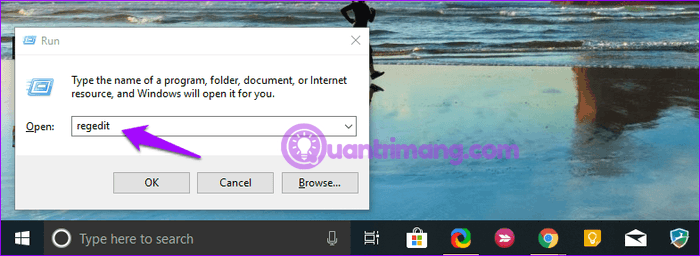
Navigate to the following location:
HKEY_LOCAL_MACHINE\SOFTWARE\Microsoft\Windows\CurrentVersion\Run
Right-click on the blank space in the right pane and select New > String Value .
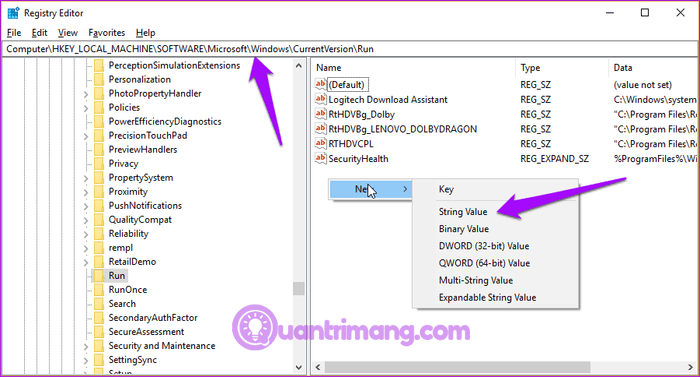
This will create a new file called New Value #1 or whatever you want to name it. Right-click on the new file and select Modify .
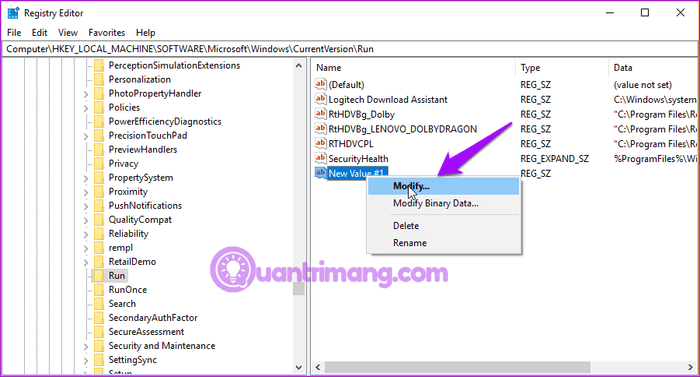
Enter the value "ctfmon"="CTFMON.EXE" in the Value data field.
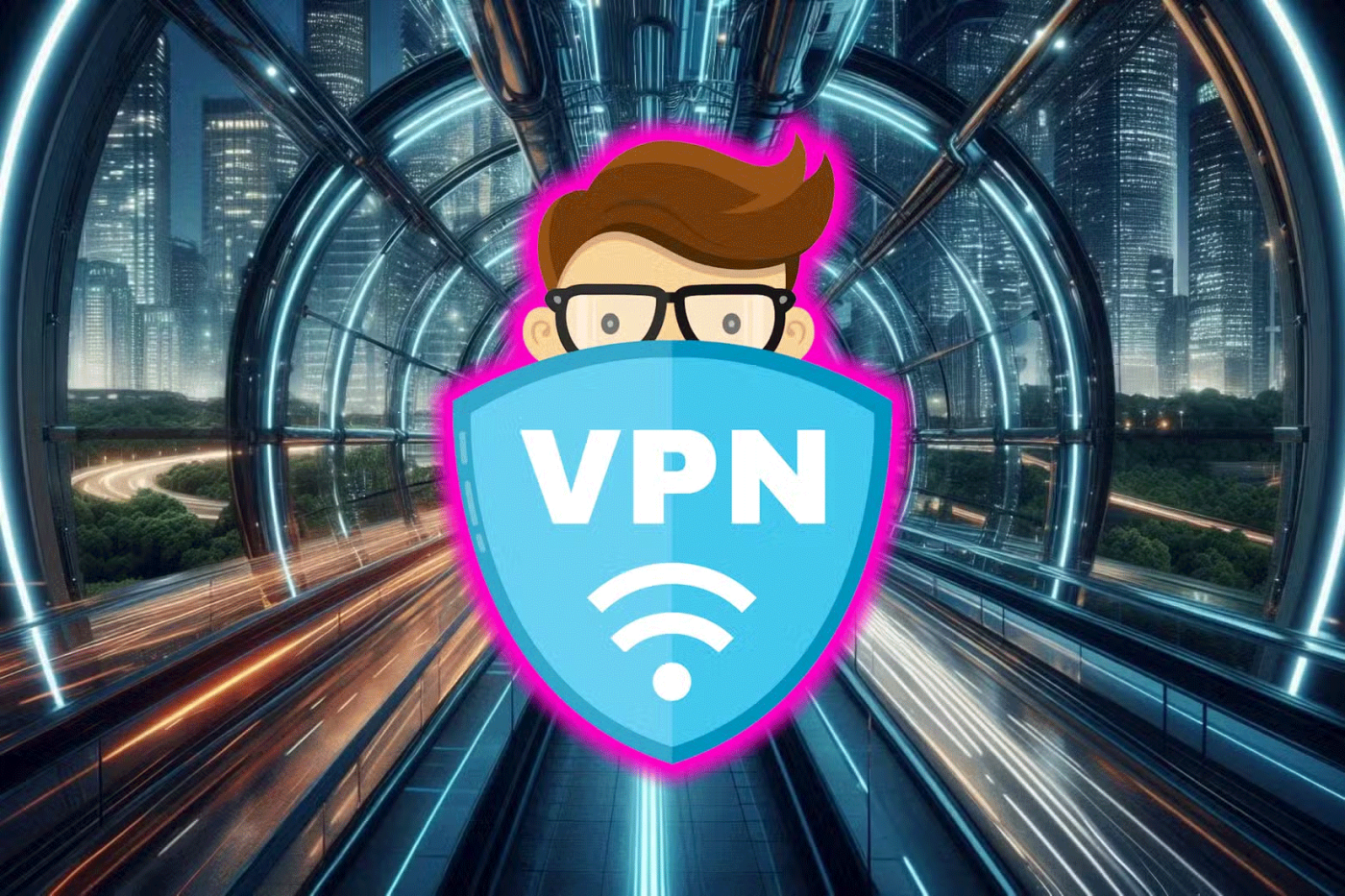
Click Ok and restart the system to check if the language bar appears on the Taskbar.
3. Perform an SFC scan
This utility will scan your Windows system for corrupted files and restore them. Windows Resource Protection or WRP files are required for the language bar to function properly. If these files are corrupted or missing, it will result in the language bar missing error.
Open Command Prompt as administrator .
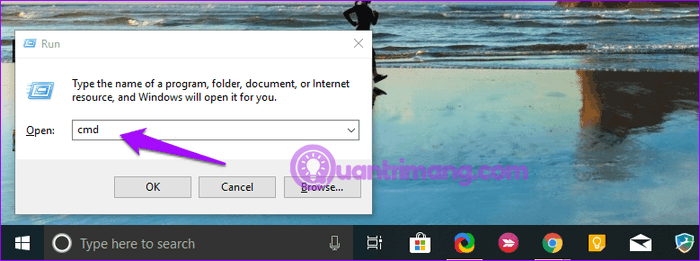
Type the following command and press Enter .
sfc /scannow
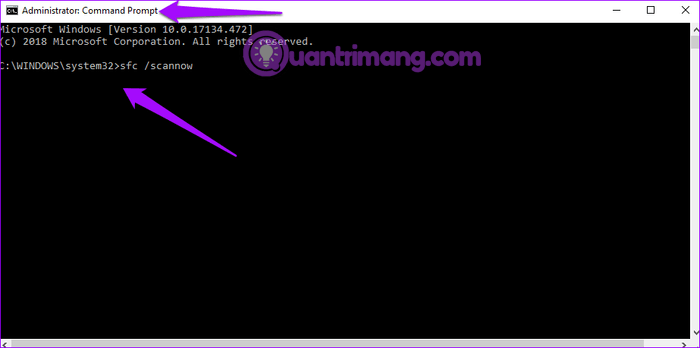
Note: Do not use the system while performing sfc scan .
This process may take a while to complete. Once it's finished, exit Command Prompt and check to see if the language bar appears.
4. Remove/add language
Some users report that adding or removing languages fixes the problem. To do this, open Settings and click Time & Language .
In Region & language, you can remove a language pack by clicking on its name and selecting the Remove option .
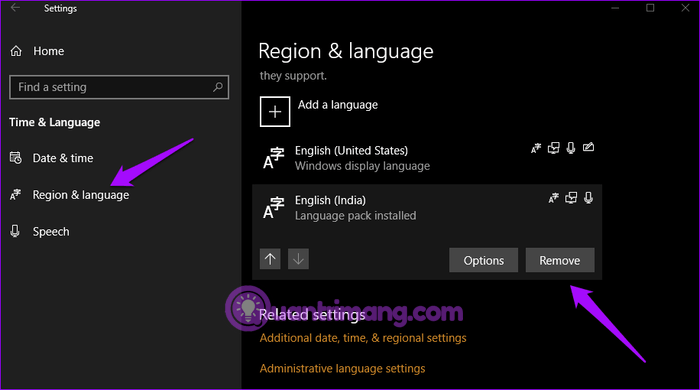
To add a language pack, click Add a language at the top of the screen, search for the language and click Next .
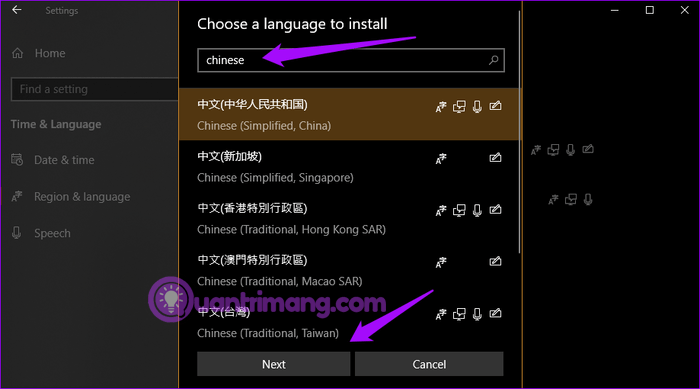
In the next screen, you can choose the options of that language. Click Install to install.
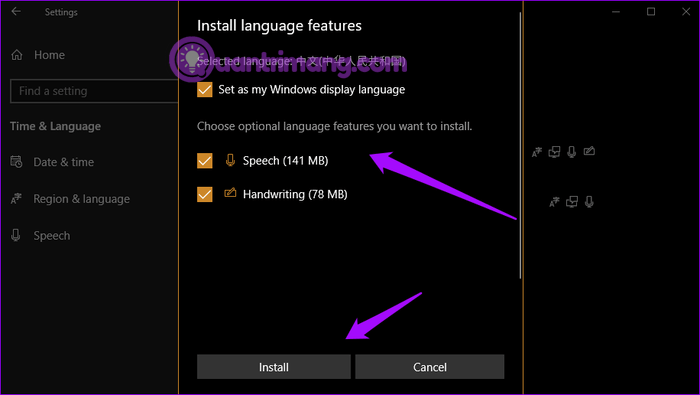
5. Update Windows
Open Settings and select Update & Security .
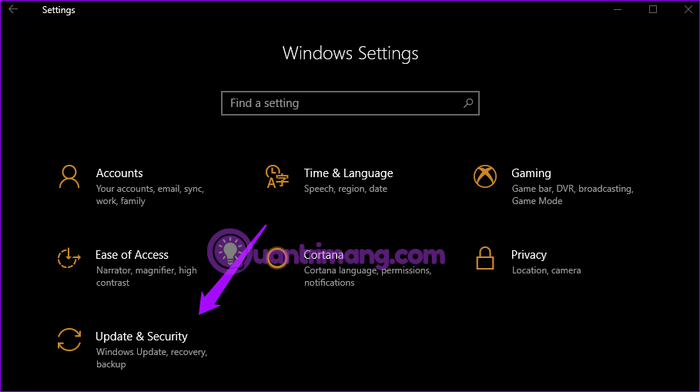
Click Check for updates to see if updates are available. Windows will install updates automatically, but automatic updates may be turned off on your system.
Good luck!
